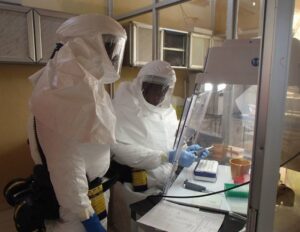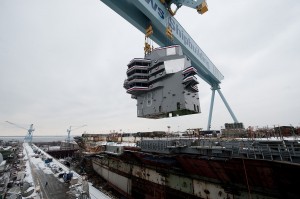
General Dynamics’ Lima tank plant, the only factory in the US capable of building main battle tanks.
WASHINGTON: President Trump’s sweeping review of the national security industrial base — from shipbuilding to microchips, strategic minerals to vaccines — is almost halfway done. A score of working groups across the government, not just the Pentagon, will submit their draft recommendations this month and next, an administration official briefed on the review tells me. Then White House advisor Peter Navarro and his staff will study the recommendations, synthesize them, and compile them into a report due on the president’s desk in April.
Navarro has a reputation as a protectionist, but our sources have said the industrial base study is not a stalking horse for Buy America, which is the subject of a separate review. The industrial base review stands on its own merits:
“This is the first time we’ve ever had an effort that has the resources to dig as deep as this… into the supply chain and into industries and capabilities that don’t always get a lot of attention,” the official says. “What makes this so fascinating is we’re really getting a sense of how broad of a universe it is … how many of those capabilities really touch DoD (the Defense of Defense) and its core missions.”

Army scientists study Ebola.
Leading the review is the Pentagon’s Office of Manufacturing & Industrial Base Policy (MIBP), under deputy assistant secretary Eric Chewning and his principal deputy Jerry McGinn; both men are former Army officers who are now consultants. But civilian agencies from Commerce to Homeland Security to Interior are all participating, the administration official said. Navarro’s staff is coordinating the interagency aspects out of the Executive Office of the President.
One working group, for instance, is looking into the nation’s capacity to make vaccines. With North Korea recently reported to have an active biological weapons program, vaccine production is a critical capability for inoculating troops before they deploy abroad or civilians after a domestic outbreak. And, of course, attacks on America’s food crops have long been a key, if quiet, focus of
The Interior Department, meanwhile, is leading a study of strategic minerals such as rare earths, essential to producing advanced electronics. While other countries have these natural resources, China has largely cornered the market by undercutting its competitors on price. Manufacturing of microcircuits has largely moved out of the US as well – with some notable exceptions such as NSA-certified trusted foundries and select defense contractors – and the review is looking into that potential shortfall too.

The nuclear carrier USS Ford (CVN-78) under construction at Newport News Shipbuilding.
Traditional metal-bending industries can get just as complex. The shipbuilding working group, for instance, covers construction, repair, and overhaul of everything from 380-ton diesel patrol boats to 100,000-ton nuclear-powered aircraft carriers. Shipbuilding means big money and a lot of precious blue-collar manufacturing jobs, so every contract is hotly contested with intense congressional attention.
One piece our source is watching particularly closely: the working group on the workforce. It covers everything from the specialist welders required for shipbuilding to computer scientists and engineers. “It’s kind of a cross-cutting area because it affects all the functional ones,” the source said. “Workforce affects everything, (and) there are some potentially innovative things we can do as a government to get our hands around that problem more effectively.”
How can such a sweeping study avoid losing focus? “When the Executive Order was being formulated, there were a lot of folks who wanted it to be broader than it is now,” the source said. “I think we struck a good balance… It’s controllable, but it’s also broad enough that we’re not going to lose anything critical.” The breadth of perspective, he said, will lead to a more innovative range of recommendations.
It’s ultimately up to controversial White House aide Navarro to pull all the different strands together. “The working groups have been at work for months already, (since) late summer, September,” the source said. “They’re going to feed that up the chain at some point in the next month or so….. That’s all going to get compiled into the report that goes to the president in April.”
And after that? Some actions the Pentagon and other executive branch agencies will be able to take on their own authority, the source said. Others, however, will have to go to Congress — which will be a saga in itself.
Sullivan says Ukraine supplemental should cover all of 2024, long-range ATACMS now in Ukraine
“We now have a significant number of ATACMS coming off their production line and entering US stocks,” Jake Sullivan said today. “And as a result, we can move forward with providing the ATACMS while also sustaining the readiness of the US armed forces.”


























